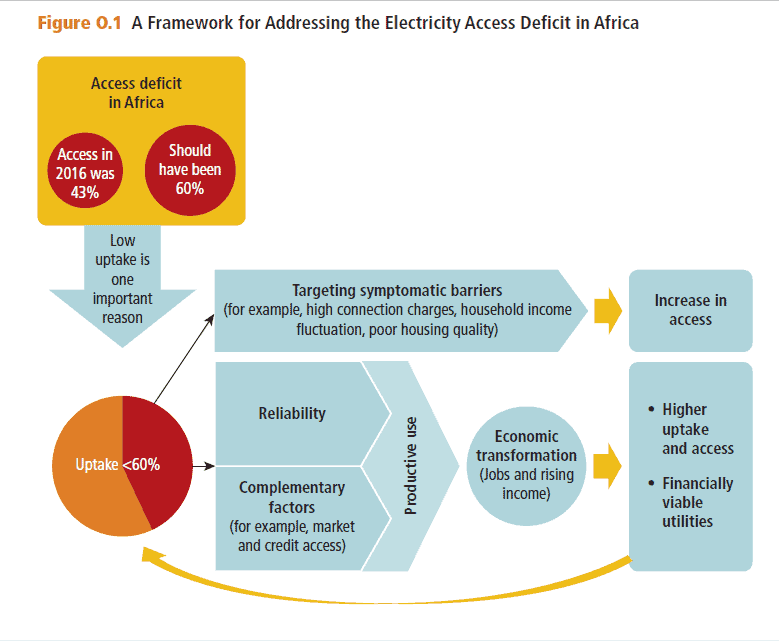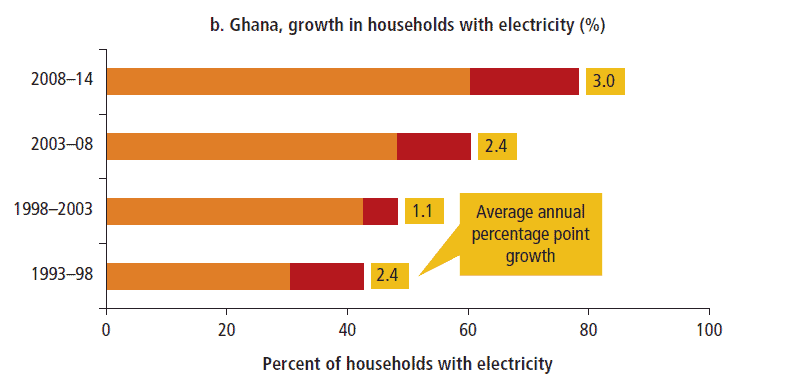Table of Contents
5 Things That Need to Happen Before We See an End to Load-shedding
Africa’s population is expected to double from roughly 1.3 to 2.5 billion people by 2050. In 2019, Southern Africa had one of the worst droughts in recent memory.
Namibia had its lowest recorded rainfall in 90 years while in Zimbabwe, over 2 million people faced serious food shortages.
But what do population growth and droughts have to do with load shedding and power cuts? Read on to find out.
Forces at play
Africa’s population has traditionally grown faster than the supply of electricity. This trend will probably continue with the demand for electricity projected to grow 2% every year as well.
Most of the growth (in both demand and population) will be concentrated in urban areas.
A growing population needs energy. Utilities need to grow and deepen their ability to cope with the increased demand for energy sustainably.
The 2019 drought in Southern Africa left Kariba Dam with only 25% of usable water.
The lowest levels in 23 years, this cut hydropower production by 66%, causing daily 16-hour power outages in Zimbabwe and Zambia.
Over half of Zimbabwe’s electricity is generated from the hydropower plant at the dam.
Extreme weather patterns like these have been linked to climate change.
If anomalies like the 2019 drought become the norm, this may pose a threat to power generation. This is especially critical if we explore the potential of small hydropower plants in SADC countries.
It’s against this backdrop that we face the question of how to plan for, design or redesign if necessary, and develop the electricity grid to ensure:
- Reliable electricity supply
- Expansion to give more people access to electricity
We’re already seeing small steps in that direction as new technologies like off-grid solar and energy storage. It will be interesting to see how big a part solar and other renewable technologies play.
The electricity market will certainly evolve as it experiences disruptions not unlike what we’ve seen in transportation, communication and now finance.
That said, a lot needs to happen before more people have reliable access to electricity and load shedding or blackouts become a thing of the past.
Powering up every home
What needs to happen to make sure access to reliable electricity becomes a reality? A World Bank report identifies five critical points.
- Stimulate demand for electricity by raising incomes
- Stimulate the productive use of electricity
- Planning by the government
- Greater regional cooperation
- Make utilities viable
Low income affects demand for electricity
Low-income stifles demand for and consumption of electricity. This is especially so in an informal economy where many households have low, irregular income flows.
This throttles demand since people can’t afford it and reduces consumption since people can’t afford appliances that use electricity.
Compared to income levels, electricity costs (tariffs and grid connection charges) are high even while not being at a level where utilities can be sustainable.
Many people earn less than US$100 per month, yet a new grid connection charge can be as high as US$824 in Zimbabwe.
Stimulate the productive use of electricity
We can’t look at the electricity issue in isolation. It doesn’t adequately address the problem. We have to look at it through the lens of economic development.
There is a correlative relationship between economic development and electricity. Where one rises, the other follows.
Economic growth implies a productive (in industry and entrepreneurship) use of energy.
Like the internet, electricity is a general-purpose technology that enables the use or consumption of other services.
There’s a need for investment into complementary factors that facilitate the productive use of electricity. Investing in infrastructure and public services like roads, schools and clinics.
A case study from Rwanda suggests that skills training, access to credit and markets helps boost household incomes and entrepreneurial activities so electricity can be better exploited for productive use.

Government planning is key
Reliable electricity will not happen without government planning. There has to be an executable roadmap or national electrification strategy.
Studies from countries that have successfully achieved greater access to reliable electricity show that an executable plan is paramount.
A clear regulatory framework will also help to attract private investment where public funding falls short.
A case in point is Ghana, which has increased household access by an average of 3% every year since crafting and adopting a national electrification policy.

At present Zimbabwe has an energy policy. We just haven’t put it in place. Policy implementation and inconsistency have been a thorn in the country’s side for decades.
Greater regional cooperation
Countries like Mozambique are energy rich. Expanding regional electricity trade could lower power investment costs while improving reliability and energy security.
The economies of scale of a coordinated regional power pool would reduce costs for utilities. This would make electricity cheaper for consumers. Reduced costs would make it more profitable for utilities to operate.
Make utilities viable
We need viable self-sustaining utility companies. Loss bearing entities create inefficiencies.
Consumers experience these inefficiencies as load shedding, poor maintenance of infrastructure and the slow attendance to faults.
Tariffs need to be brought in line with costs to produce and distribute electricity. Utilities need to expand their customer base while improving service to existing customers.
At present, most utilities in Africa, ZESA included, are not sustainable owing to below-cost tariffs, a small customer base and inadequate consumption.
Going back to the egg analogy from my first post on why we have power cuts in Zimbabwe, utilities need more people buying more eggs at a cost-reflective price.
Leveraging new technologies
New technologies are changing everything from how we communicate, how we get around to how we transact with each other. Why shouldn’t there be a change in how we generate, manage and distribute energy?
The price of solar systems has fallen 89% over the last 10 years. This has made it possible for more people to produce their electricity.
The emergence of blockchain technology makes it possible for people to trade that energy between them (for a case of beer if you’re in Australia).
It’s critical we adapt given the challenges of growing populations and climate change. Why should we blindly persist with the old ways? Let’s reap the boons of new technology. Why should the Aussies have all the fun with the sun?
Despite the challenges we face, these are interesting times.
A decade ago, electric cars looked like nothing more than a novelty or a rich billionaires plaything. Today carmakers like Jaguar, Volvo, and General Motors say they plan to go fully electric by 2030.
While those might be bold statements, the shift in mindset from an industry that’s notorious for its resistance to change is still a win.
If such a change can happen in an industry that hasn’t seen any major innovation since Ford’s Model T, what’s saying the same can’t happen with electricity?
Conclusion
To sum up:
Population growth and climate change will have a direct bearing on how we tackle reliable electricity.
Economic development can’t be separated from electricity supply.
Regional cooperation can unlock economies of scale that bring down the production costs of electricity and make it more affordable for consumers.
Technology and innovation are our friends.
This was part two of my three-part series on power cuts in Zimbabwe. In part one, I looked at why we have electricity shortages in Zimbabwe.
In part three I look at what the future of electricity in Zimbabwe will look like and what you can do to prepare yourself for it.